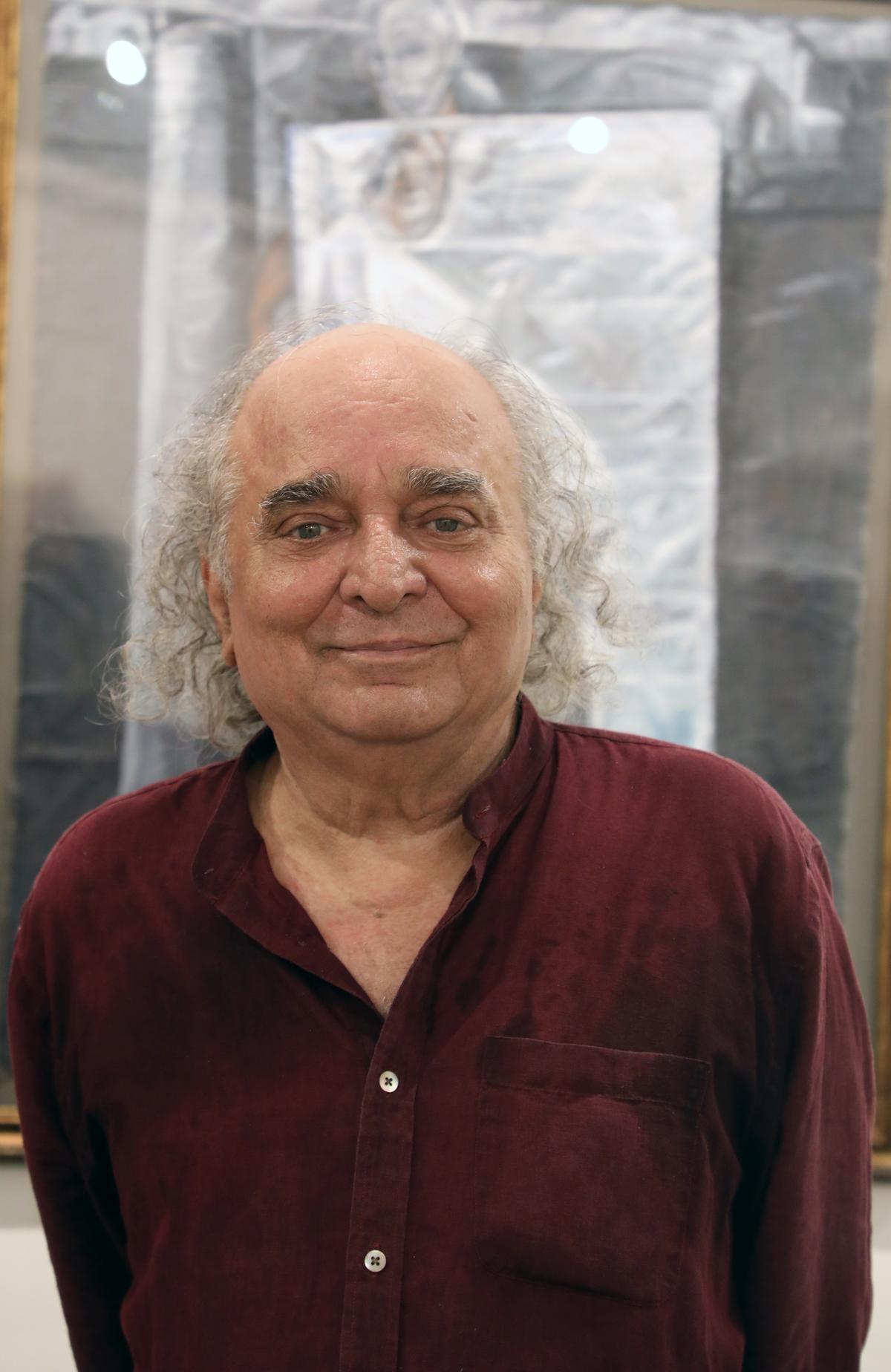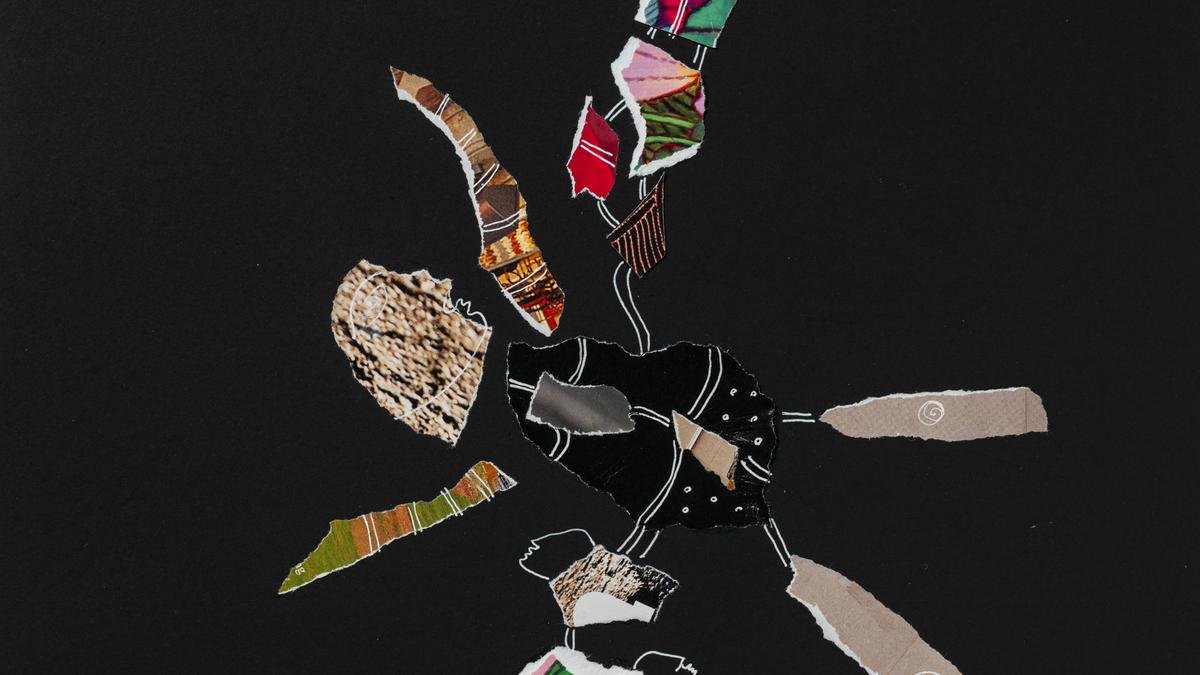The Cholamandal Artists Village will turn 60 next year. Nine and a half acres were purchased over time, as funds were rustled up. A batik exhibition in 1965 was a sell out and gave the group 50,000 rupees. Many put their share down for a piece of land in Injambakkam. The sea and its sandy shores beckoned them. Three artists from the commune speak to us.
P Gopinath (b. 1948)
“We all paid for the land,” says Gopinath. Venkatapathy’s was the first house, and Paniker’s the second. Gopinath lived in a thatched hut. “Paniker was a father figure, philosopher, teacher — you could reach out to him any time,” recalls Gopinath fondly. Those days they sold paintings for 100 to 150 rupees. The brilliant but unstable Ramanujam, whom Paniker rescued and brought into the community made drawings on the back of cards, with no money to buy paper.
“We used to walk to the beach and help the fishermen drag in the net so that we could get free fish,” laughs Gopinath. When a tea-kadai opened, it was a welcome haunt. “Those were the best times in our life, despite our struggles. We learnt to understand each other, not interfere with each other’s ideology.” Cholamandal’s setting was invaluable to its resident artists, unlike others, not as lucky. “Many good artists in our college were later lost in the crowd, dependent on work from cinema hoardings and advertising.” Gopinath’s interest in colour was already cemented, from his admiration for Gaugin to miniature paintings. “A few trips to Kangra strengthened my resolve to create my own pictorial grammar.”

Senior artist P Gopinath at Cholamandal art village
| Photo Credit:
Akhila Easwaran
Not everyone believed artists could live together. A visiting journalist wrote a scathing review — ‘the people who started this ‘utopia’ can be pushed off in a catamaran into the Bay of Bengal.’ Gopinath says, “We were lucky that Lonely Planet wrote a good article that drew in crowds and changed such perceptions.”
SG Vasudev (b. 1941)
When KCS Paniker found out that his students, SG Vasudev and Arnawaz were close friends, he encouraged their match. She was a free-spirited Parsi girl, and he was from Mysuru, already breaking convention by joining the School of Arts and Crafts. It would turn out to be a marriage of two fine-tuned artistic minds. Cholamandal gave freedom to artists in every way to share lives, to collaborate and to find their true spirit. The only son (he had two sisters) of parents who hoped he would be a doctor or engineer, Vasudev made art his chosen path, encouraged by art critic G Venkatachalam. Now, he had to prove it. After school, he secured a coveted National Scholarship. “I told my father he need not send any more money.” Vasudev became an accomplished visual artist, with his unusual techniques of layered paintings, exquisite copper reliefs and tapestries.
Artist SG Vasudev
| Photo Credit:
SPECIAL ARRANGEMENT
“Paniker started Cholamandal so that we could independently make a living. We never had to touch Government money,” says Vasudev with pride. From his early days at the village, he was interested in the sister-arts. An open-air theatre was built, with Paniker exhorting, “What about non-artists? We need to make a place for them as well.” Here Vasudev invited poet AK Ramanujam and theater-director Girish Karnad. Musicians and dancers even performed free of cost.
After Arnawaz passed away from cancer, Vasudev moved to Bangalore. He later married writer-activist Ammu Joseph. From cover designs for Kannada books to Ranga Shankara theatre’s logo, workshops and camps, and now Art Park in Bangalore, Vasudev has always been open to art-forms. At 84, he is making collages, which he began during the pandemic while experimenting with wedding card cut outs. From poets to craftsmen, Vasudev has always embraced diverse influences. The collage exemplifies his spirit of collaboration.
C Douglas (b. 1951)
“I visited Cholamandal as a student and stayed over weekends. Paniker had retired and I met him there,” recalls C Douglas, who was at the College of Arts from 1970 to 1976. “Conversations around Paniker used to be about art and literature, his love for Wuthering Heights.” Here, Douglas discovered that oil paint was invented to mimic skin tones and flesh. When Douglas showed his small oil canvases, Paniker observed they looked like tempera. The richness of oils was missing. “He then prepared a small canvas with layers of white coloured oil and gave it to me, saying — try this. The slippery surface made so much difference. It gave body to forms.”

Senior artist C. Douglas at Cholamandal art village
| Photo Credit:
Akhila Easwaran
Already, Josef James, who was teaching Economics at Madras Christian College in Tambaram was drawn to the artists village. James became the chronicler of the Madras Movement, and editor of the journal Artrends, which was published from 1961 to 1982 by the Progressive Painters Association. Douglas reminisces, “Life did have completeness. Modern Indian art was coming into a historic timeline.”
In 1978, art connoisseur Sara Abraham organised a travelling exhibition Kala Yatra. Six of the 12 artists were from Madras, as Douglas says, “I was a part of this, along with Ganesh Pyne, Ram Kumar, Bikash Bhattacharya, Hussain, Surya Prakash, Lakshma Goud, Janakiram, Nandagopal and Gopinath, as well as Thotta Tharani. The show was completely sold out.”
Published – September 22, 2025 01:08 pm IST
